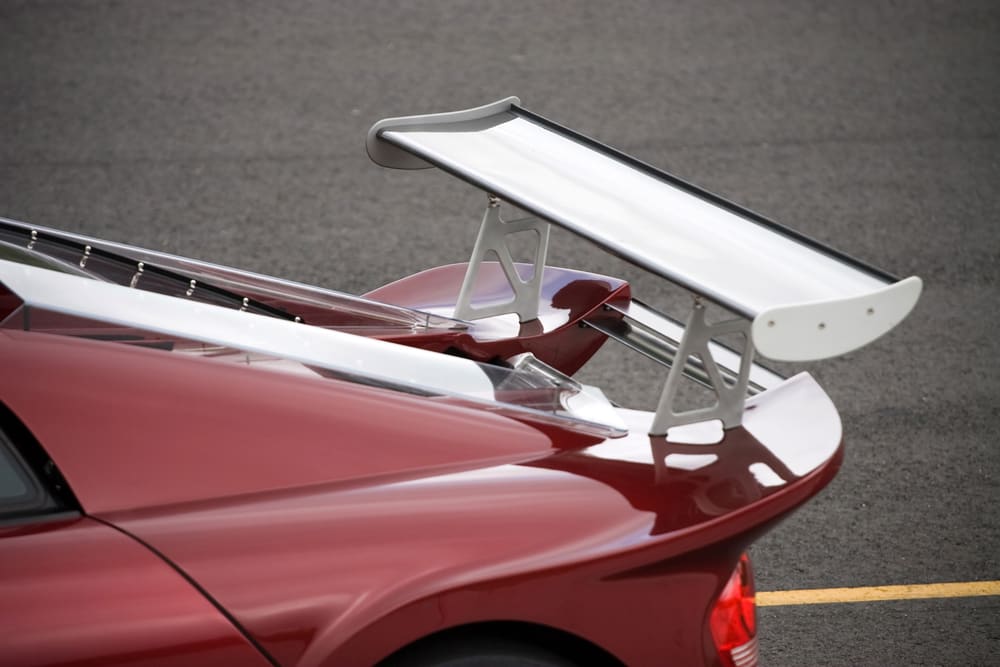

ARENA Creative / Shutterstock.com
Whether you purchased a new car and want to make it a bit more fun and personal or you are just moving to the state of Alaska, you need to know what you’re allowed to do to modify your vehicle while still keeping it street legal. Here you’ll find out what the laws are in Alaska so you can modify your vehicle and still be able to drive it without issue on the roads in the area.
Sounds and noise
There are some vehicle modifications that can alter the sounds that it makes, including the muffler and sound systems. While there are varying laws throughout the municipalities of Alaska concerning the allowable noise levels, those living in the Anchorage area must make sure that their vehicles are in compliance with the following:
Residential areas
- Noise levels cannot be above 60 decibels between 7 AM and 10 PM
- Noise levels cannot be above 50 decibels between 10 PM and 7 AM
Commercial areas
- Noise levels cannot be louder than 70 decibels between 7 AM and 10 PM
- Noise levels cannot be louder than 60 decibels between 10 PM and 7 AM
Mufflers
Alaska does have restrictions on mufflers throughout the state. These include:
Vehicles are required to have mufflers that are in good working order and that do not allow “unusual and excessive” noise levels to escape the vehicle.
Exhaust systems cannot be modified in a way that amplifies the noise of the engine beyond the levels of the originally installed system.
Muffler bypasses, cutouts or other similar modifications are not permitted.
Tip: Also check with local county laws to make sure you are following any municipal noise ordinances that may be more stringent than state-level laws.
Frame and suspension
Alaska laws do not place limits on the modifications of the suspension system or adding lift kits to vehicles. However, vehicles must comply with frame heights determined by the Gross Vehicle Weight Rating (GVWR):
- 4,500 pounds or less - Maximum frame height is 24 inches
- 4,501 – 7,500 - Maximum frame height is 26 inches
- 7,501 – 10,000 - Maximum frame height is 28 inches
Engine
Alaska also does not have any laws regarding engine modifications.
Lighting and windows
Alaska laws also govern the use of lighting on vehicles, including the intensity and color of the lights used. The state also restricts the amount of window tinting that is allowed on vehicles.
Lights
Vehicles must drive with headlights that illuminate 450 feet ahead of the vehicle when no other vehicles are present.
Vehicles must use lighting that illuminates 150 feet ahead of the vehicle when within 300 feet of another vehicle.
Lights must be mounted between 24 inches and 54 inches in height
Headlights and taillights must use white light
Brake lights must be red
Signal lights must be a shade of light between red and yellow
Blue flashing lights are only permitted for those who work with the police or fire departments
No other light colors are permitted
Window tinting
- Non-reflective tint can only be used on the top five inches of the windshield
- Front driver and passenger windows must permit over 70% of light to pass into the vehicle
- Rear side windows and rear window must permit more than 40% of light to pass through
- Mirrored or metallic/reflective tints are not allowed on the front side or back side windows
- Red tints are not allowed on any vehicle windows
Antique/classic car modifications
Alaska requires that vehicles manufactured before 1949 be safe for road use, which means they must have:
- Hydraulic brakes on each wheel
- Halogen or sealed beam headlights
- Safety belts for each person in the vehicle
- Turn signals
- Lexan or safety glass
- Windshield wiper in front of driver
- Blue dot or standard taillights
- Parking brake
If you’re considering modifying your car to align with the restrictions set forth by Alaska law, YourMechanic can provide the mobile mechanics to help you install the new parts. You can also ask our mechanics what modifications may be best suited to your car using our free online Q&A system, Ask a Mechanic.



